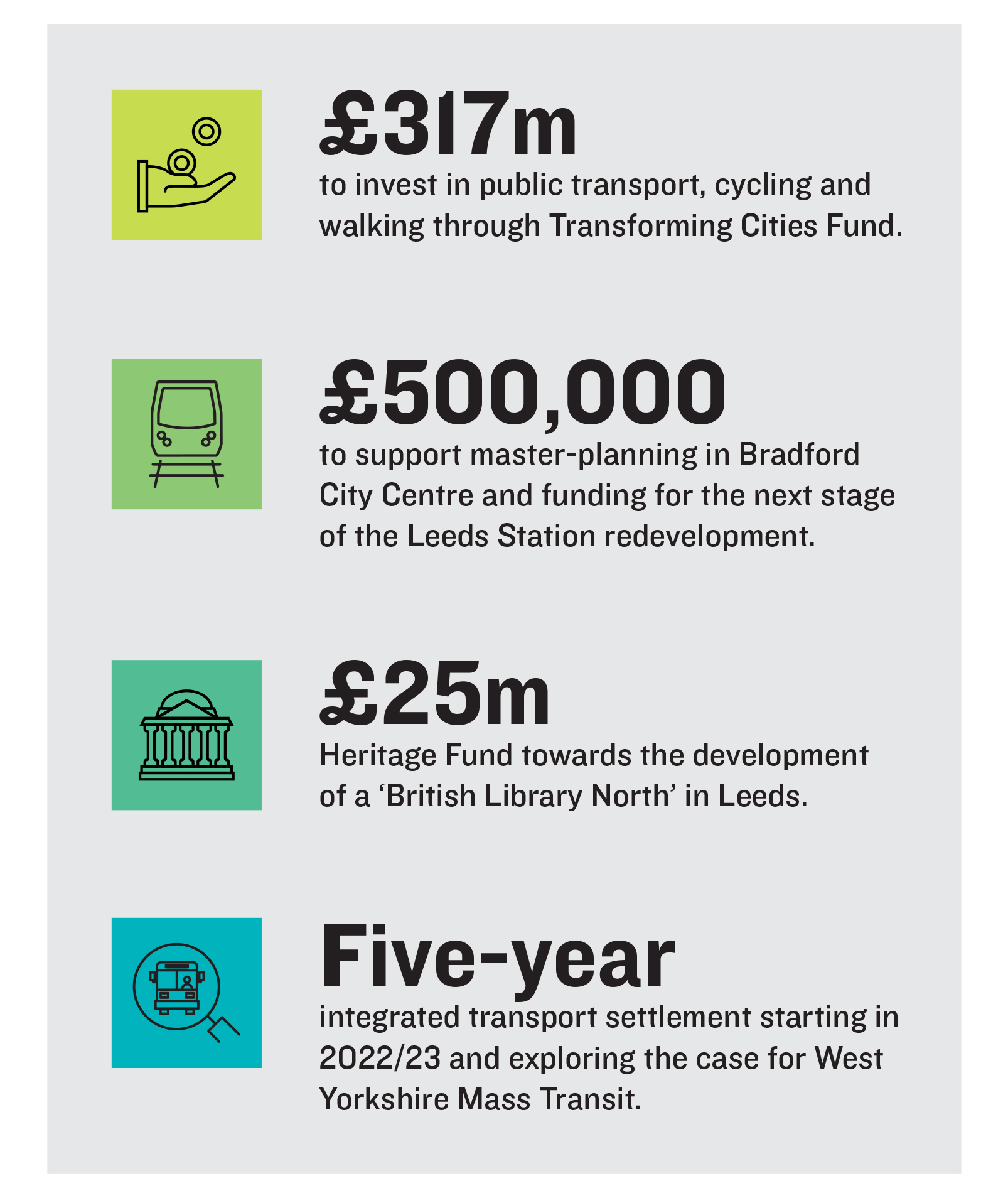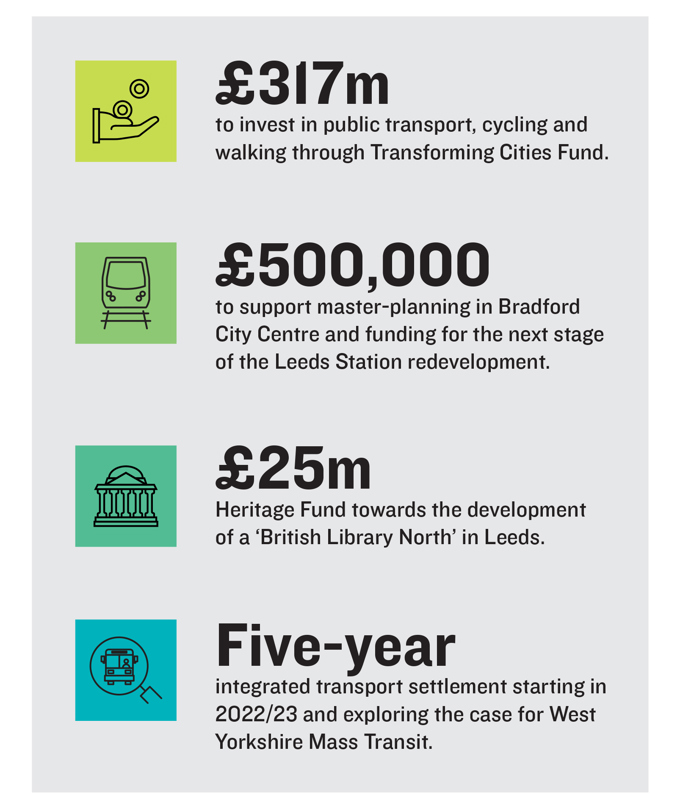After more than five years of debate, on the 13
th March 2020 the proposed terms of…a £1.8bn devolution deal between the government and the local authorities of West Yorkshire
[1] and the West Yorkshire Combined Authority were published.
In line with devolution agreements for Greater Manchester, Liverpool, Sheffield Teesside and the West Midlands, the deal will devolve a range of powers and responsibilities to the West Yorkshire Combined Authority, including new powers on housing and planning along with a new, directly elected West Yorkshire Mayor.
This blog provides a summary of some of the key points in the Devolution Deal as well as lessons that can be taken from similar deals in neighbouring Mayoral Authority Areas.
The Powers and Funding
The planning and housing powers to be transferred to the West Yorkshire Combined Authority are in keeping with the powers for other established combined authorities, and include:
- The preparation of a statutory Spatial Development Strategy for West Yorkshire;
- Mayoral land assembly and compulsory purchase powers;
- The power to designate a Mayoral Development Area and to create Mayoral Development Corporations to support the delivery of housing on strategic sites;
- Eligibility to bid for a newly established Brownfield Housing Fund with a £400m envelope; and,
- The establishment of a Strategic Place Partnership with Homes England supplemented by £3.2m in government funding across 2020/21 and 2021/22 to support development of a pipeline of housing sites across the region;
A significant funding package for specific projects has also been announced as part of the deal which includes:
- £317m to invest in public transport, cycling and walking through Transforming Cities Fund;
- £500,000 to support master-planning in Bradford City Centre to maximise regeneration opportunities from Northern Powerhouse Rail, and funding for the next stage of development of the Outline Business Case for Leeds station redevelopment;
- A £25m Heritage Fund towards the development of a ‘British Library North’ in Leeds and,
- A five-year integrated transport settlement starting in 2022/23 and exploring the case for West Yorkshire Mass Transit.
British Library North
A key part of the deal is the £25m Heritage Fund in recognition of West Yorkshire’s ambition for the conservation and re-use of heritage buildings. The fund will be provided by the Government to support the work of Leeds City Council with the British Library in establishing a potential ‘British Library North’. If successful, the move would also come as part of a wider plan to mark Leeds' year of cultural celebration in 2023. Leeds is already home to the British Library Depository, Archive and Reading Room at Boston Spa.
The preferred location for the move has been identified as Temple Works in Temple. The Grade I listed building lies at the heart of proposals for the South Bank Leeds regeneration area. The building is controlled by CEG, and Lichfields has been working with CEG for a number of years on wider regeneration proposals at South Bank, including securing consent for a £350 million mixed-use development at Globe Road.
Leeds City Council is now working with British Library and CEG to explore the future potential of the building and develop plans for the new library.
Innovation District
The aim for the Innovation District, located in Leeds City Centre, is to create a world-class hub for research, innovation and entrepreneurialism in priority sectors that delivers transformational economic growth for the City Region.
The District is home to a number of world class teaching, medical and research institutions, including Leeds Teaching Hospital Trust, University of Leeds, Leeds Beckett University and Leeds Arts University. A notable inclusion is the Leeds General Infirmary and the recently approved £450 million ‘state of the art’ adults’ hospital and children’s hospital for which Lichfields helped secure planning permission last year.
The devolution deal outlines that the West Yorkshire Combined Authority and Government will establish a West Yorkshire Innovation network through the Connecting Innovation programme. This network will provide a dual-hub for the community of entrepreneurs, start-ups and SMEs within West Yorkshire.
The hub will initially be secured through the presence of the NEXUS Innovation Centre at the University of Leeds and the Buckley Innovation Centre at the University of Huddersfield with further regional opportunities to be explored in the future. This network will bring together business support services from the Leeds Growth Hub, local Universities and Innovate UK.
Lessons from Neighbours
The devolution deal for West Yorkshire will see the combined authority join its northern neighbours, which have already agreed devolution deals and which have elected Metro Mayors (Greater Manchester, Liverpool City Region, Tees Valley, Sheffield City Region and North of Tyne). Indeed, 7 of the 10 mayoral combined authorities (including West Yorkshire) in England are located in the north in a clear signal of the governments intent to shift control of investment funds and development powers to the ‘Northern Powerhouse’.
Lichfields’ has a breadth of experience of working in these regions and has performed a key role in responding to the development of emerging Spatial Frameworks on behalf of clients. Through this experience we have identified a number of key issues which will need to be properly considered in the West Yorkshire Spatial Framework:
- The deal provides statutory plan making powers to produce a spatial development strategy for West Yorkshire. It will be interesting to see if West Yorkshire can avoid the delays in production of an agreed planning framework that has dogged Manchester, for example, whose spatial framework has seen several delays since preparation first began in 2014.
- There is a big focus on brownfield site release with £400m funding identified as part of the deal. Whilst this funding is welcomed to unlock difficult urban sites, there is a need to balance regeneration sites with the release of greenfield and even Green Belt sites where appropriate, to ensure that there is a steady delivery of land and reduce the risk of a delay should brownfield sites not be brought forward in time to meet identified needs.
- Greater Manchester has assumed that the entire Spatial Framework area is a single housing market area. However, sufficient evidence has not always been provided to justify the position and in some areas, a single HMA is not seen to accurately reflect the varying characteristics of different areas. This is no different for West Yorkshire which, as well as covering a large geographical area of some 2,000 sq.km, contains distinct and varied housing markets with significant contrasts in character and values.
- Finally, it is imperative that the West Yorkshire Spatial Framework is founded upon a consistent evidence base. It is inevitable that existing local authority evidence base documents will have adopted different approaches in reviewing baseline data and forecasting future needs, however there is a clear need for consistency when formulating the Regional Spatial Framework.
Conclusion
The recently announced devolution deal will see a number of significant powers and funding transferred to West Yorkshire. The powers secured will give the combined authority greater flexibility to take decisions when addressing local concerns and needs.
Lessons can be learned from deals in neighbouring authorities as well as the range of issues that would need to be considered in the West Yorkshire Spatial Framework. Careful thought is needed to ensure that there is a consistent evidence base when formulating the framework and ensuring that a flexible approach is taken when assessing the varying needs and characteristics across the region.
However, without a doubt, the Devolution Deal presents a great opportunity for West Yorkshire to build on its strengths and unlock the area’s latent potential for well-planned economically sustainable growth.
[1] Comprising Bradford, Calderdale, Kirklees, Leeds, and Wakefield Councils
Image credit: Tim Green





